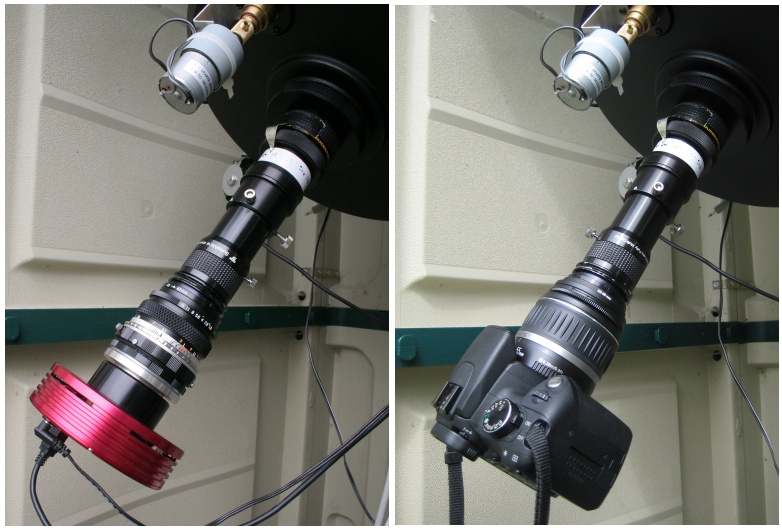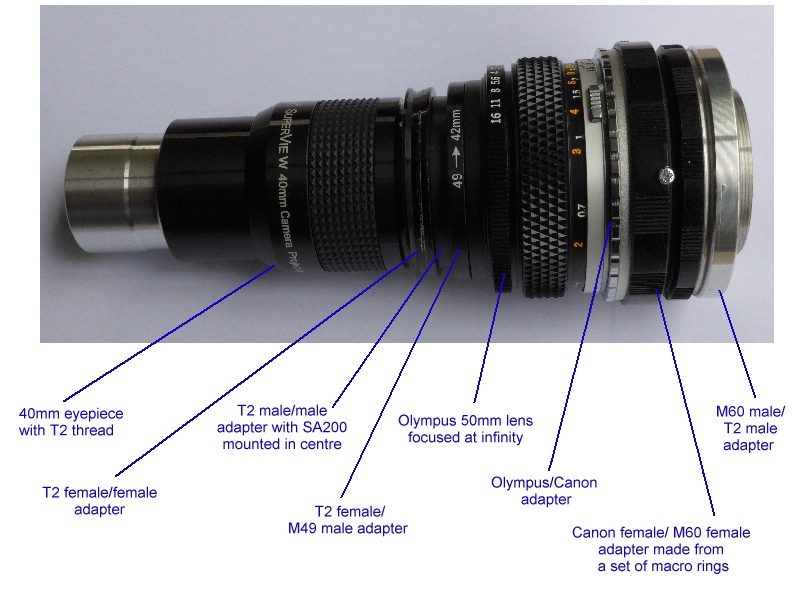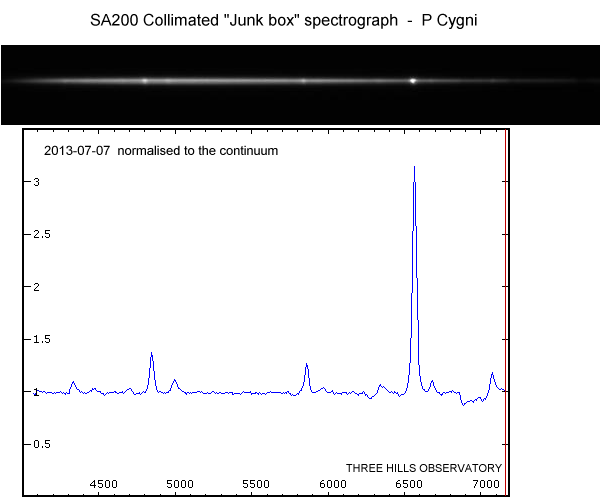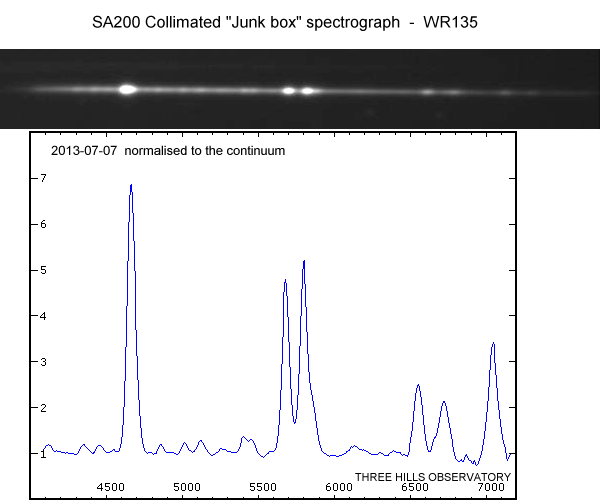The Star Analyser 200 used in a collimated
"Junk Box" Spectrograph
(See also this version used by Andrew Smith to study flare
stars)

SPECTROSCOPY
RETURN TO SPECTROSCOPY INTRODUCTION
The Star Analyser 200 used in a collimated
"Junk Box" Spectrograph
(See also this version used by Andrew Smith to study flare
stars)

It is possible to extend the simple SEPSA slit spectrograph concept to produce a fully collimated classical spectrograph design by using the eyepiece to collimate the light from the slit and a second camera lens after the grating to refocus the beam on the camera sensor (similar to an afocal imaging configuration).
This can be built using an SA100 but either gives too low dispersion to be useful or, if longer focal length lenses are used, becomes too long to be practical. Using the SA200 instead though gives a relatively compact instrument but still with a useful dispersion. Below is an example of a slitless version of such an arrangement built using a collection of items from my “junk box”.

The 40mm eyepiece and 50mm camera lens used as collimator and objective produced ~1000A/mm dispersion with the SA200 (6.4A/pixel with an ATIK 314L camera) and in this slitless version, a resolution of 27A (dependent on star image size) with a 280mm aperture Celestron C11 at f6.3 and 3 arcsec seeing.
A Digital SLR complete with lens can also be
used with this design replacing the camera lens and astro camera, as shown at
the top of the page.
Below are two example spectra using this setup (emission line stars P Cygni and WR135) Note that with the collimated design the spectrum remains sharp across the spectrum even at the red end where deterioration due to coma is most pronounced when using the converging beam arrangement conventionally used with the Star Analyser.

